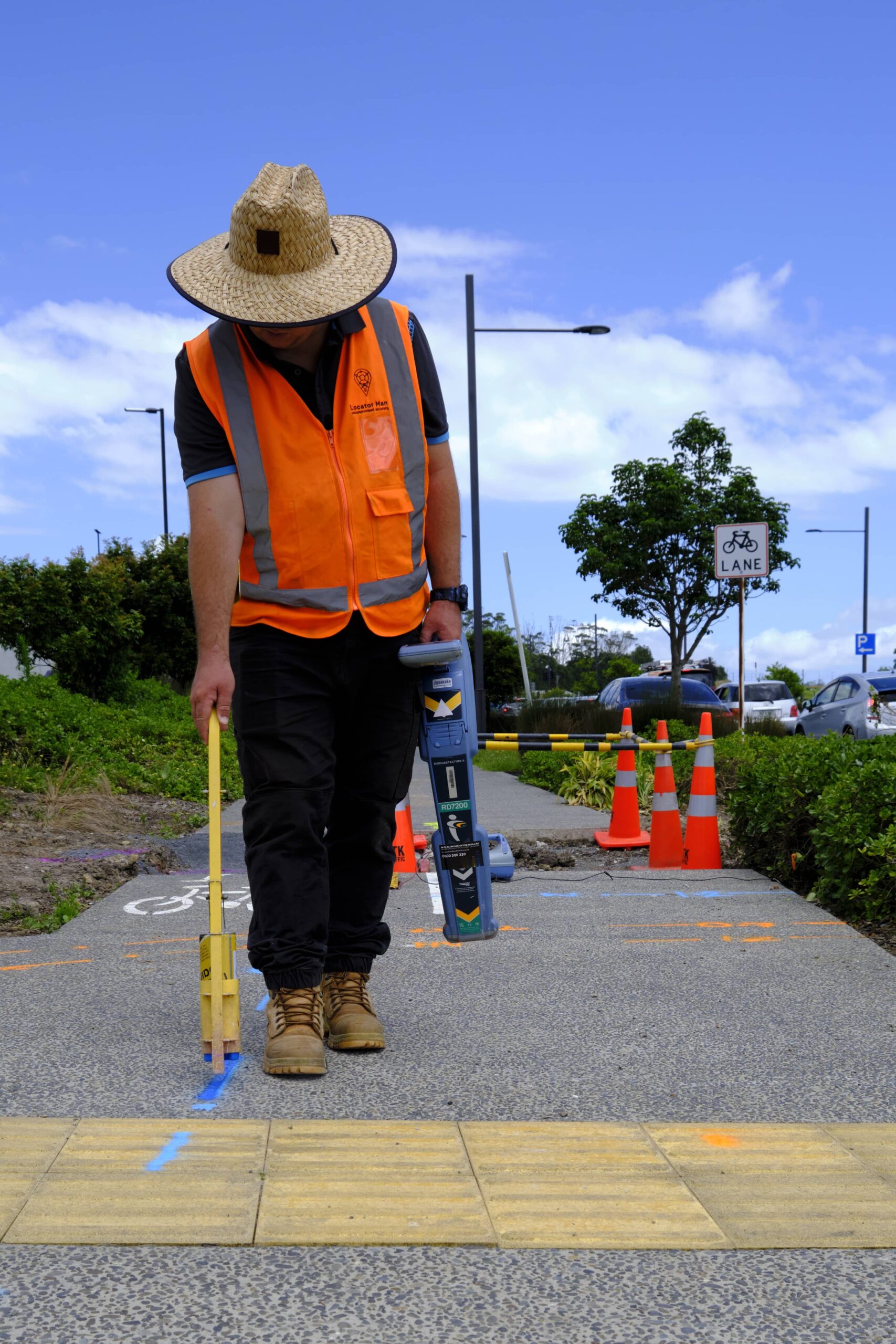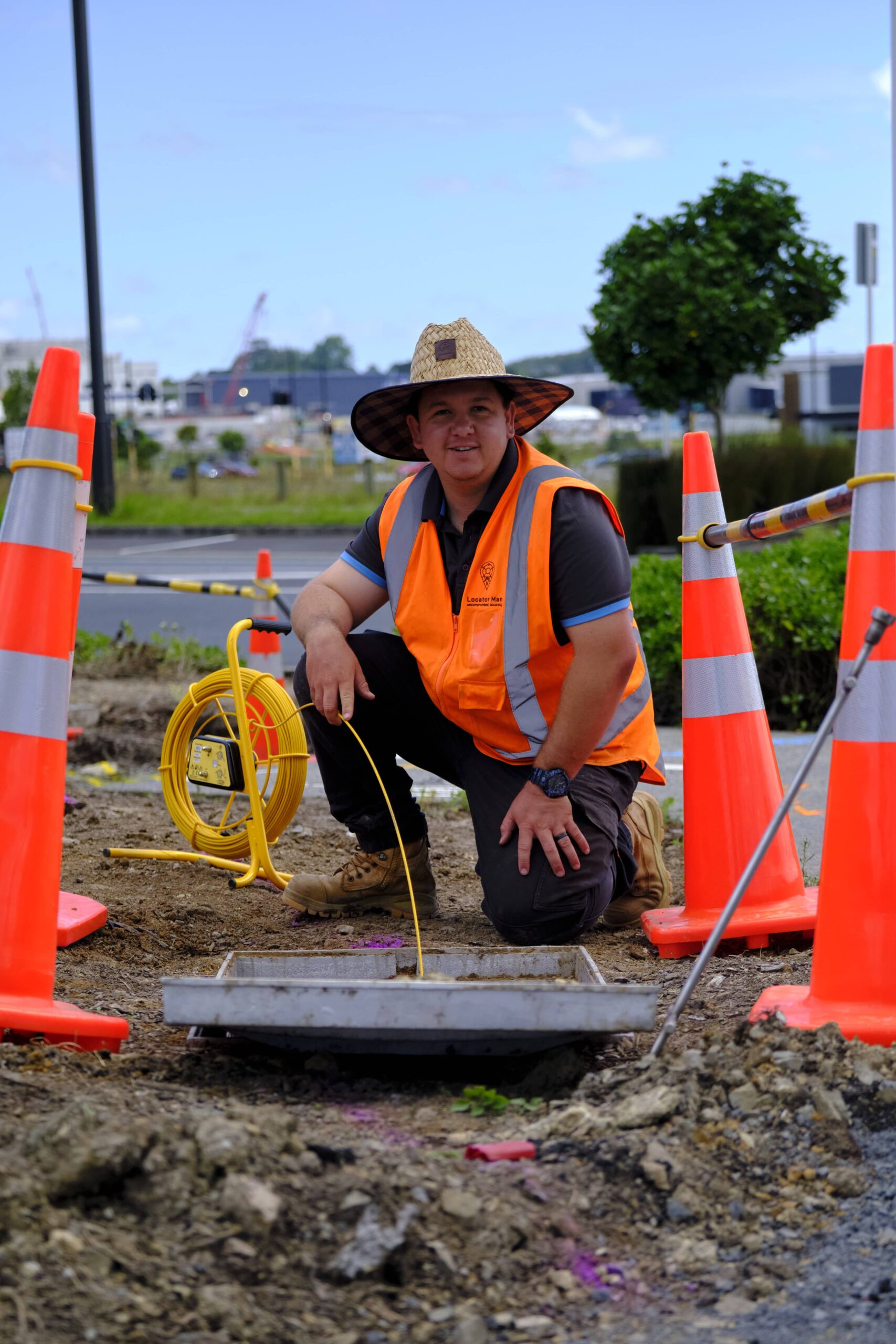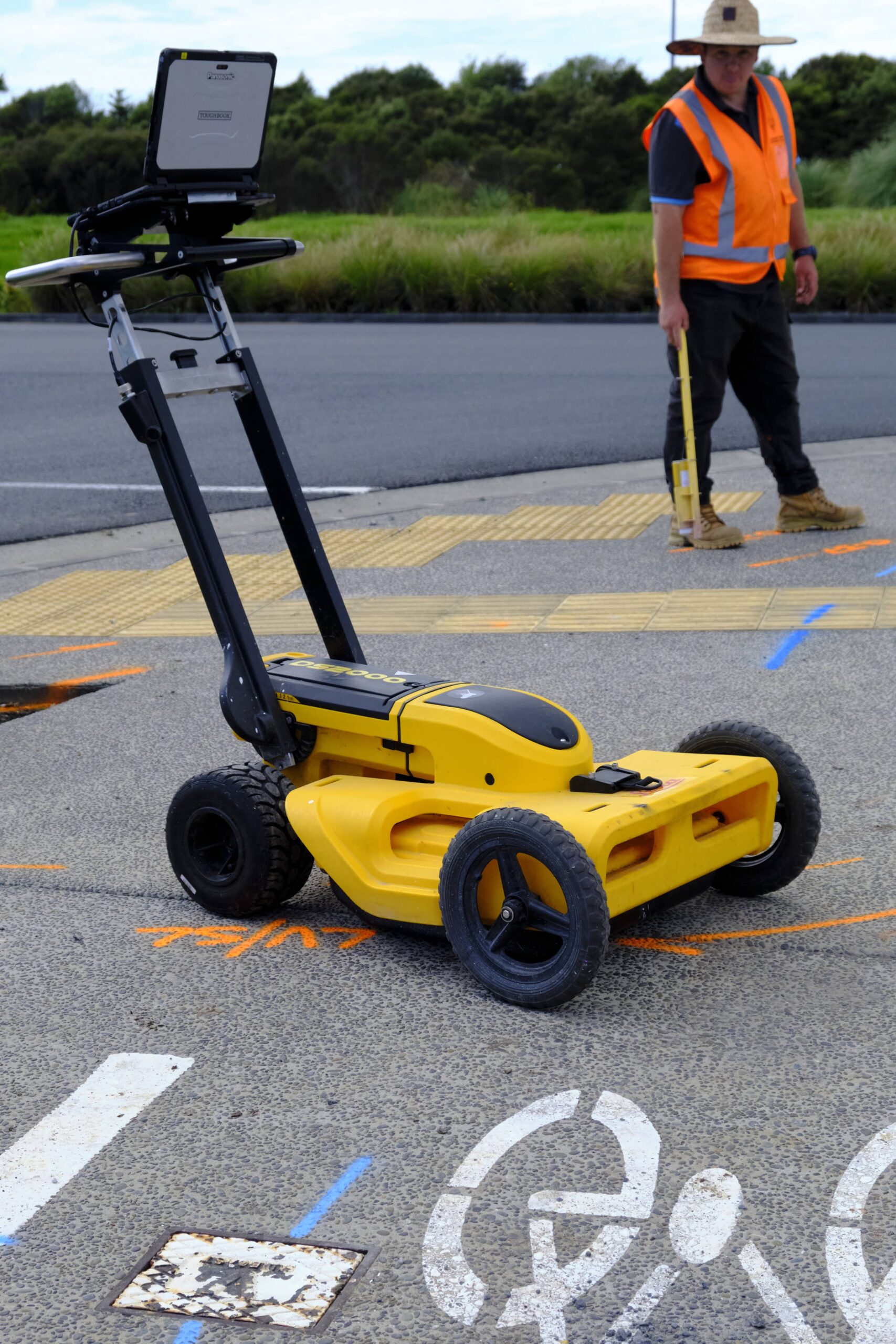Our Services
What We Do
Electromagnetic Induction(EMI)
Pipe and Duct Tracing
Ground Penetrating Radar (GPR)
Electromagnetic Induction(EMI)
Electromagnetic Induction (EMI) is a method used to locate underground pipes, cables, and other conductive utilities. The process involves energizing the underground utilities with low-frequency electromagnetic pulses. These pulses are generated by an EMI generator and are transmitted into the ground through a metallic rod. The electromagnetic waves then travel through the conductive utilities and produce a magnetic field that can be detected by a handheld receiver.
The handheld receiver, also known as an EMI locator, is used to trace the location of the underground utilities. It picks up the magnetic field generated by the electromagnetic pulses and displays the results in the form of an audible tone, a visual display, or both. The tone or display indicates the presence and strength of the magnetic field, allowing the operator to determine the exact location of the underground utilities.
EMI is considered the most accurate form of locating underground utilities because it directly interacts with the conductive materials, providing a precise and accurate reading of their location. Unlike other methods that rely on indirect indicators, such as surface disturbances or changes in soil resistance, EMI directly detects the presence and location of the underground utilities. This makes it an indispensable tool for professionals in the construction, plumbing, and utility industries, who need to locate and identify underground pipes and cables with accuracy and efficiency.
EMI is used to trace:
- Power and old telecom copper cables
- Non-metallic services (stormwater pipes, water pipes, plastic ducting) using a traceable rod and/or sonde. (Dependant on accessibility and health and safety)
- Cast iron water and gas pipes
- Traced wires for Fibre, gas and water
Pipe and Duct Tracing
The process of locating a water pipe connection or an empty duct involves using a metallic rod and an Electromagnetic Induction (EMI) locator. The metallic rod is pushed down the pipe, serving as a conductor for the EMI locator. The EMI locator is then connected to the rod and energized, sending a low-frequency electromagnetic signal down the conduit. As the signal travels through the pipe, it generates a magnetic field that is picked up by the EMI locator. By analyzing the strength and direction of the magnetic field, the EMI locator can determine the exact location of the water pipe or empty duct.
This method is commonly used in the construction and plumbing industries to locate underground pipes and ducts without the need for excavation. It is a non-invasive and cost-effective way to identify the location of pipes and ducts, saving time and resources compared to traditional excavation methods. The use of an EMI locator and a metallic rod is especially useful when dealing with pipes and ducts that are buried deep underground, where excavation can be both difficult and disruptive.
Ground Penetrating Radar (GPR)
Project Management:
- BeforeUdig enquiries to determine what utilities are present in the are
- EMI and GPR scanning to confirm this
- Co-ordinate with Surveyors, CCTV contractors as well as consultants




